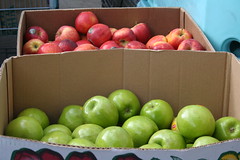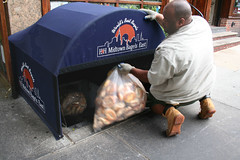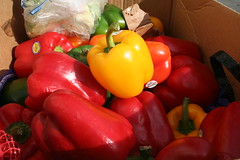Food rescue does not involve superheroes in capes. Also called food recovery, it is the  practice of retrieving edible food that would otherwise go to waste and distributing it to those in need. In most cases, the recovered food is perfectly edible, but not sellable. For example, it’s day old bread or bagged lettuce past its “sell-by” date. Often, it’s in great shape (as you can see in these photos).
practice of retrieving edible food that would otherwise go to waste and distributing it to those in need. In most cases, the recovered food is perfectly edible, but not sellable. For example, it’s day old bread or bagged lettuce past its “sell-by” date. Often, it’s in great shape (as you can see in these photos).
The food that recovery agencies pick up is donated by supermarkets, restaurants and farms. In most cases, the rescued food is being saved from the dumpster and, ultimately, the landfill. Food recovered on farms is kept from being plowed under. On farms, the donations often must be harvested, or gleaned, by volunteers.
 Businesses that participate receive tax benefits for their donations, freedom from liability lawsuits thanks to the Bill Emerson Good Samaritan Food Donation Act and the warm, fuzzy feeling that comes from doing the right thing. Heck, you may even receive positive publicity in the local press and on this site.
Businesses that participate receive tax benefits for their donations, freedom from liability lawsuits thanks to the Bill Emerson Good Samaritan Food Donation Act and the warm, fuzzy feeling that comes from doing the right thing. Heck, you may even receive positive publicity in the local press and on this site.
If you’re a restaurateur, supermarket supervisor or farmer who doesn’t enjoy throwing away food, there’s probably a food recovery organization near you willing to pick up your extras. The US Department of Agriculture used to operate a phone line 1-800-GLEAN-IT) to provide assistance in finding food recovery agencies. But since they now redirect you to the private non-profit, the Society of St. Andrew, you may as well just call those helpful folks at 1-800-333-4597.
If you’re just an interested party, you can still help. It’s easy and rewarding to get involved. As a volunteer, I have gleaned unharvested crops and picked up supermarket and from supermarkets. I’m currently trying to find food donation sources for a homeless shelter.
33 Comments